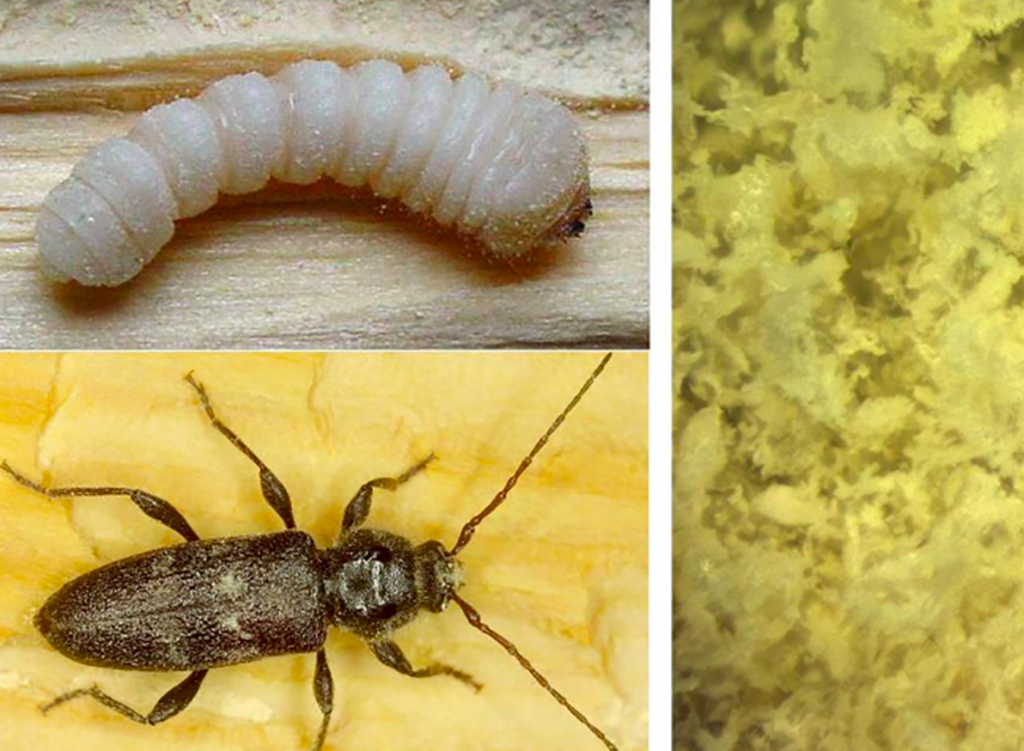Researchers from the Federal Institute for Materials Research and Testing in Germany have developed a sustainable new 3D printing material out of termite and boring insect refuse.
Using the powdered wood particles and feces left by the minuscule bugs after feeding, the scientists were able to concoct a unique circular economy feedstock, which could be binder jet 3D printed without any polymeric additives. The bio-based material yielded parts with a low level of strength but high dimensional accuracy, potentially making it ideal for creating eco-friendly filigree structures in future.

From faecal matter to feedstock
As the world continues to seek out sustainable manufacturing solutions, 3D printing is often touted within the industry as more eco-friendly than traditional production methods. Despite this, the widespread use of oil-based photopolymers remains a challenge to the technology’s green credentials, and necessitates the creation of a circular alternative.
Natural feedstocks aren’t just better for the planet, but they enable users to determine the life cycle of products early-on during production, and adjust their throughput accordingly. Such homebrewed materials can also be formulated by recycling refuse from the factory floor, lending them potential as both a cost-effective and sustainable solution.
Given that binder jetting is able to process virtually all powdered feedstocks, the technology has often been utilized as a means of testing such novel formulations. However, refining these materials into powders with an appropriate particle size remains challenging. To combat this, the German scientists have therefore identified a newly-optimized pellet, but in the unlikeliest of sources: the termite.
The insect’s digestive system converts non-uniform woods into a compact cellulose-lignin mixture, that (as it turns out) is suitable for 3D printing without further processing. While prior timber-based feedstocks have required polymeric additives to be printed or the use of other binding phases, termite frass doesn’t, making it uniquely easy-to-process.

3D printing with termite frass
To create their wood-based feedstock, the scientists reared a small farm of European House Borers (EHBs) and termites, feeding them for six months while collecting their droppings. As it turned out, all of the termites’ six-sided pellet-shaped faecal matter proved to be almost identical in size, and showed excellent flowability, making them ideal for fabricating uniform layers.
Once they had sufficient raw materials, the team used a commercial 3D printer’s thermal curing station to cross-link them with an ExOne binder, yielding a set of cubic specimens. Interestingly, by changing the system’s binder saturation parameters, the researchers were able to identify the ratio for delivering structures with adjustable levels of porosity.
In terms of layer thickness, the best reproducible result that could be achieved with the termite droppings was 800 μm, while the EHB proved more accurate at 100 μm. Likewise, the team’s dice-like structure featured a dimensional accuracy of around 200 μm, but it also suffered from oversaturation, in addition to low packing density.
As a result, the part exhibited low mechanical strength, and although the scientists theorized that infiltration could bolster its solidity, they conceded that their material was not well-suited to printing “ready-to-use objects.” In spite of this, the researchers still consider EHB frass to hold potential as a feedstock for creating filigree structures, albeit with the need for reinforcing via post-processing.
Additive innovations in sustainability
Over the last year, researchers have made considerable progress in investigating the eco-impact of 3D printing, and identifying new more circular materials.
A team based at the University of Freiburg have developed a novel wood-based 3D printing material of their own. By combining naturally-sourced lignin with cellulose balls, the scientists were able to create a unique bio-polymer that could prove useful within light construction applications.
Researchers from Wichita State, the University of Kansas and Kansas State University have joined forces to develop a data algorithm for exploring the potential of sustainable materials. Using data analytics, computational approaches and diagnostic tools, the team aims to make eco-friendly feedstocks more accessible.
Elsewhere, scientists from the Universidade NOVA de Lisboa (UNIDEMI) have highlighted the need for further research into 3D printing’s circularity. The team’s literature review revealed that polymeric factory refuse holds particular potential for reducing waste output, and could be used as a recycled material in future.
The researchers’ findings are detailed in their paper titled “Searching for biological feedstock material: 3D printing of wood particles from house borer and drywood termite frass.” The research was co-authored by Rudy Plarre, Andrea Zocca, Andrea Spitzer, Sigrid Benemann, Anna A. Gorbushina, Yuexuan Li, Anja Waske, Alexander Funk, Janka Wilbig and Jens Günster.
To stay up to date with the latest 3D printing news, don’t forget to subscribe to the 3D Printing Industry newsletter or follow us on Twitter or liking our page on Facebook.
Are you looking for a job in the additive manufacturing industry? Visit 3D Printing Jobs for a selection of roles in the industry.
Featured image shows three drywood termites. Photo via the Plos One journal.



